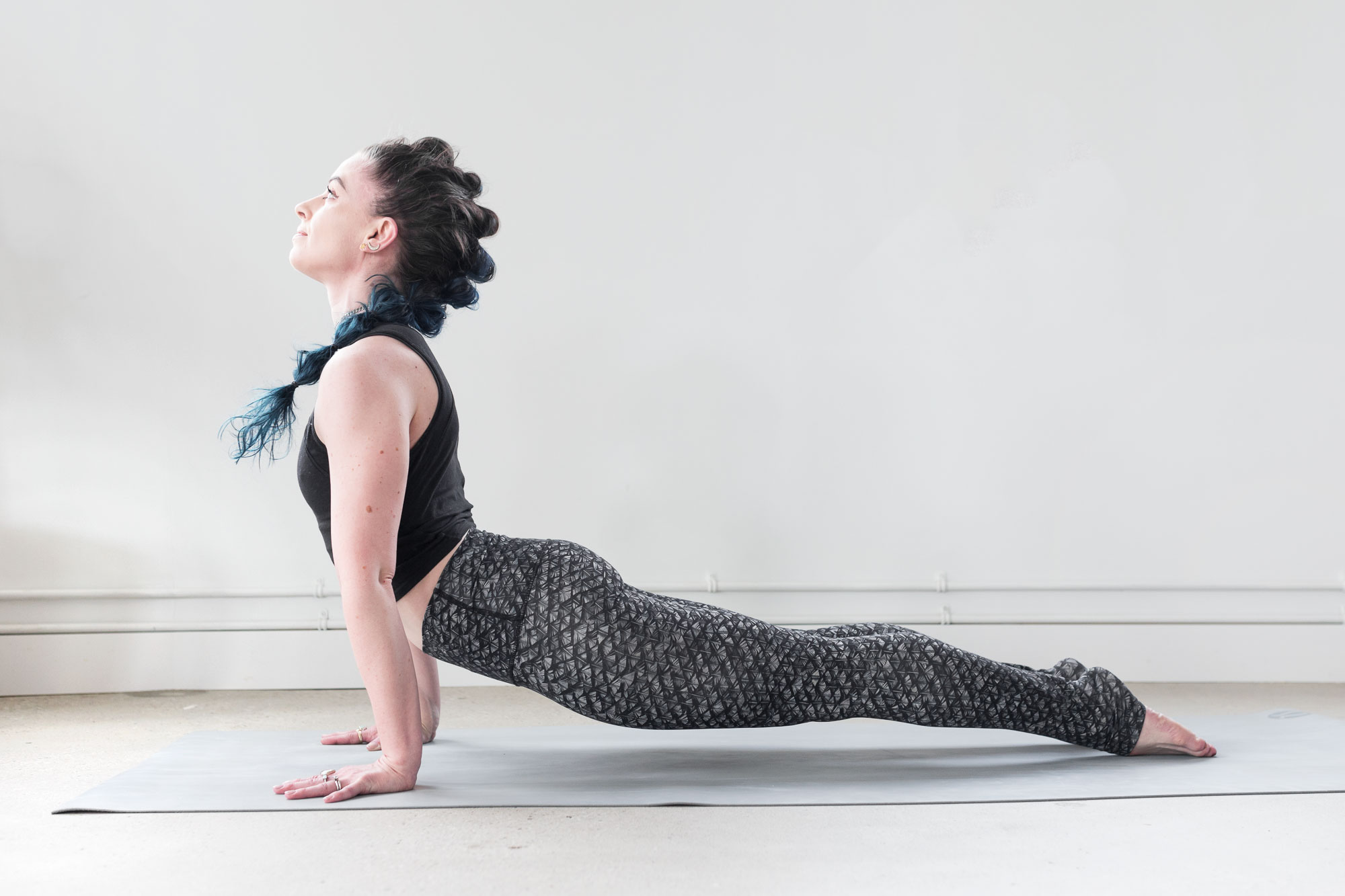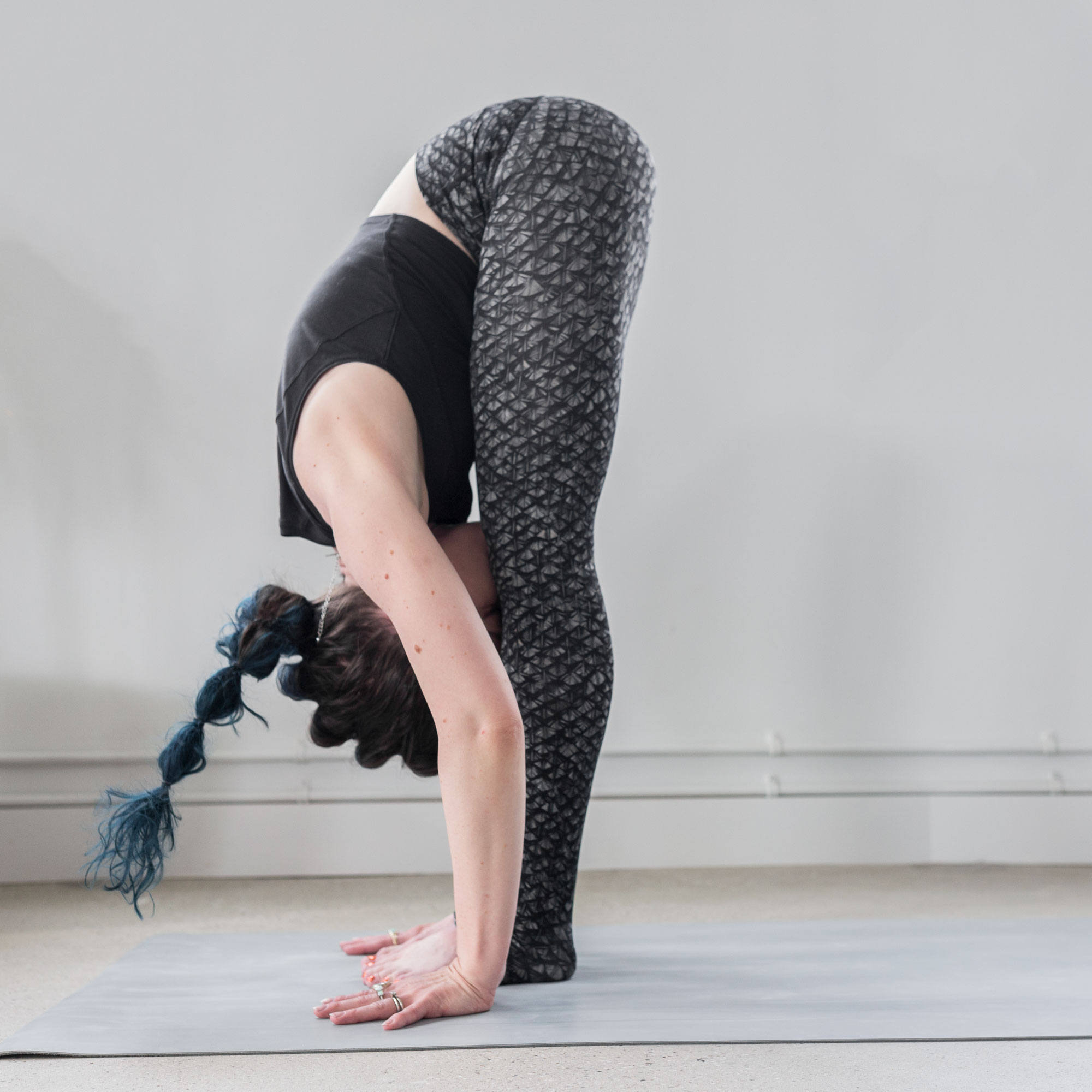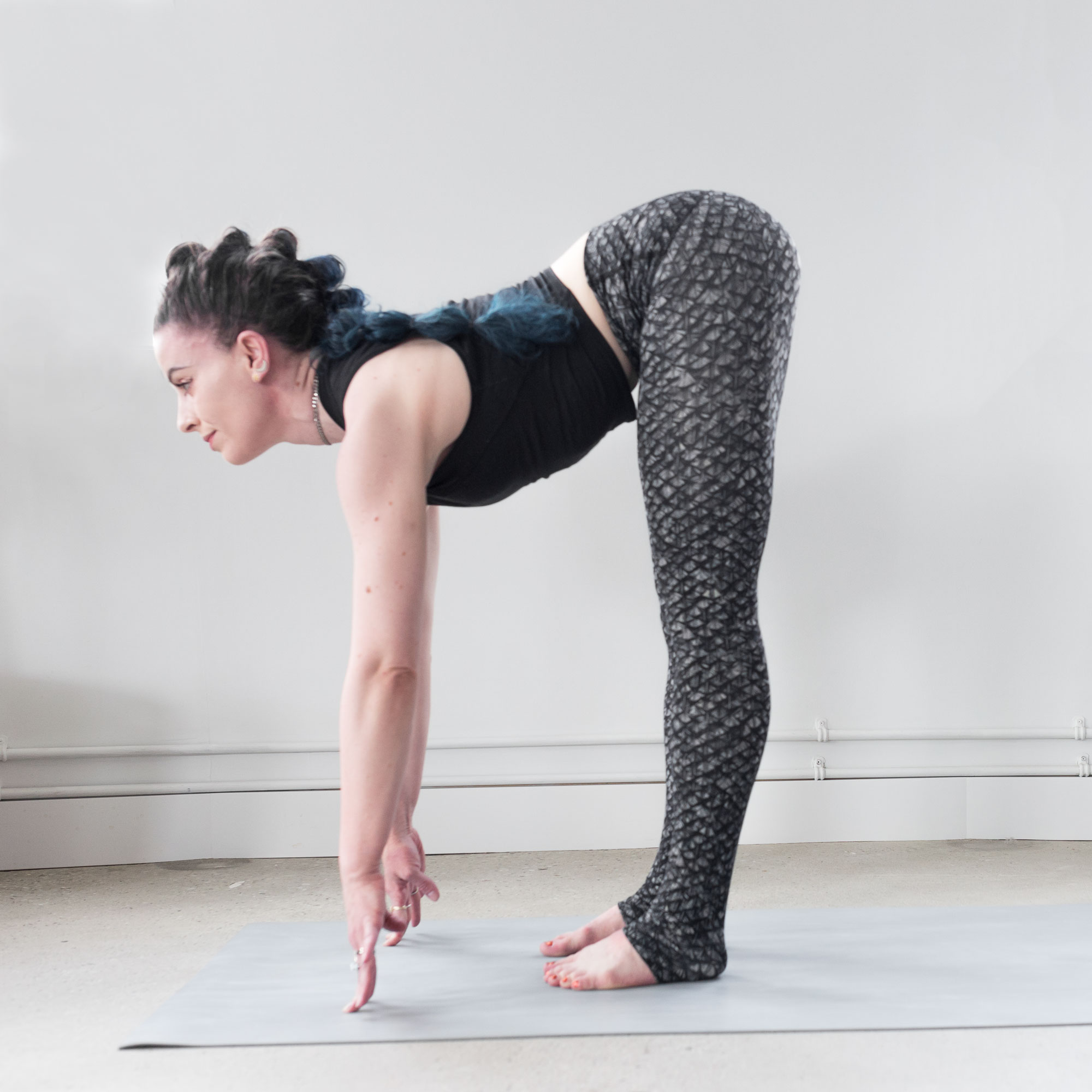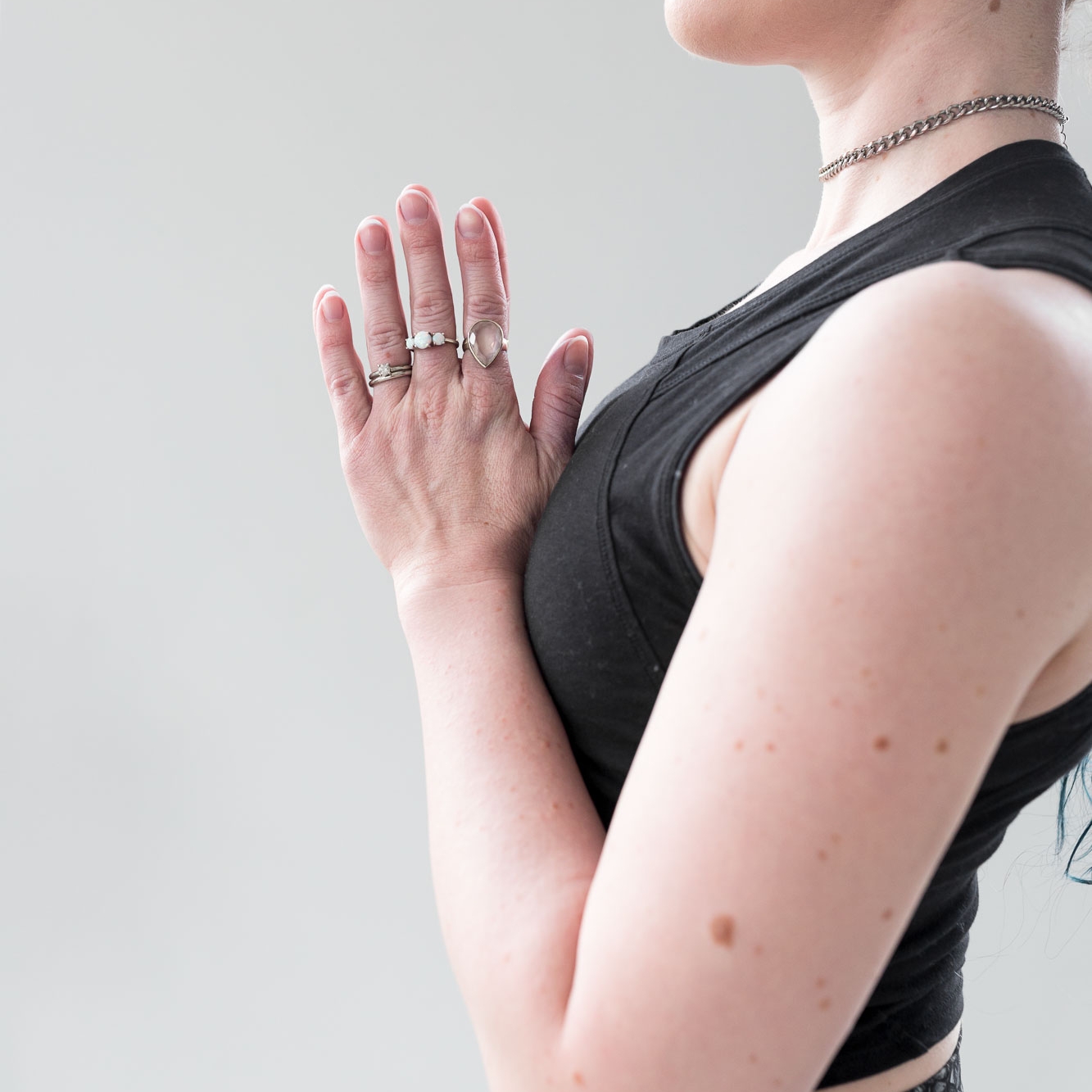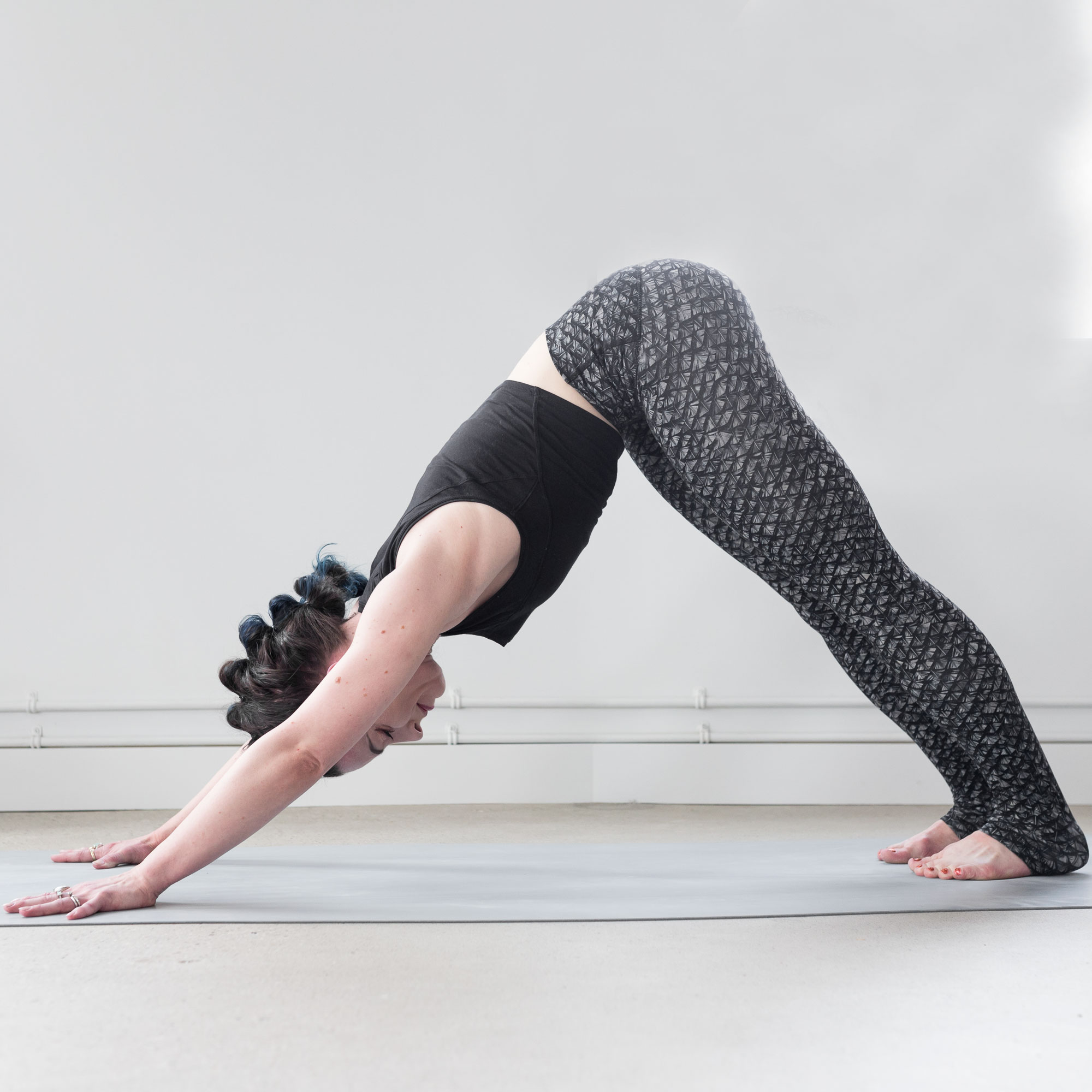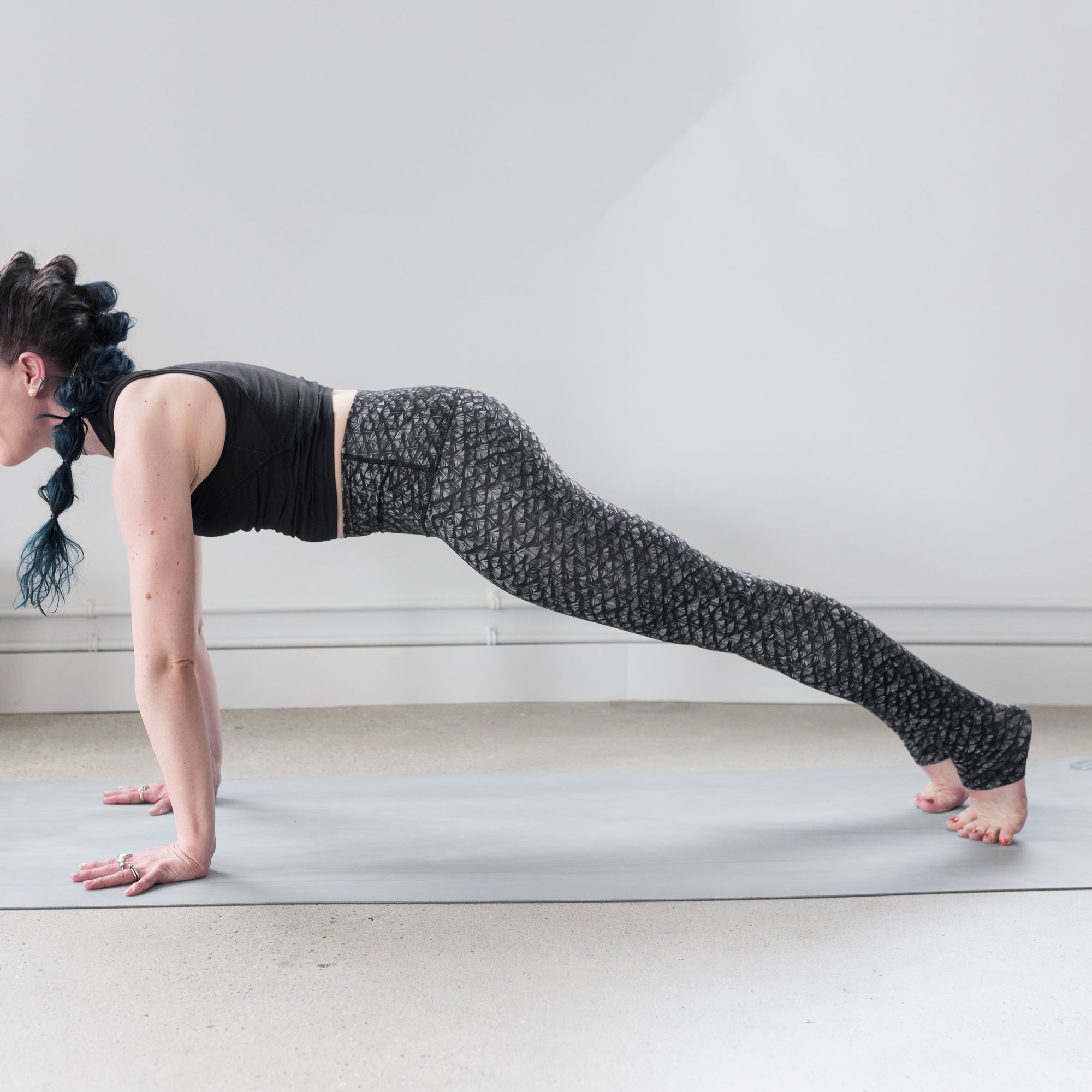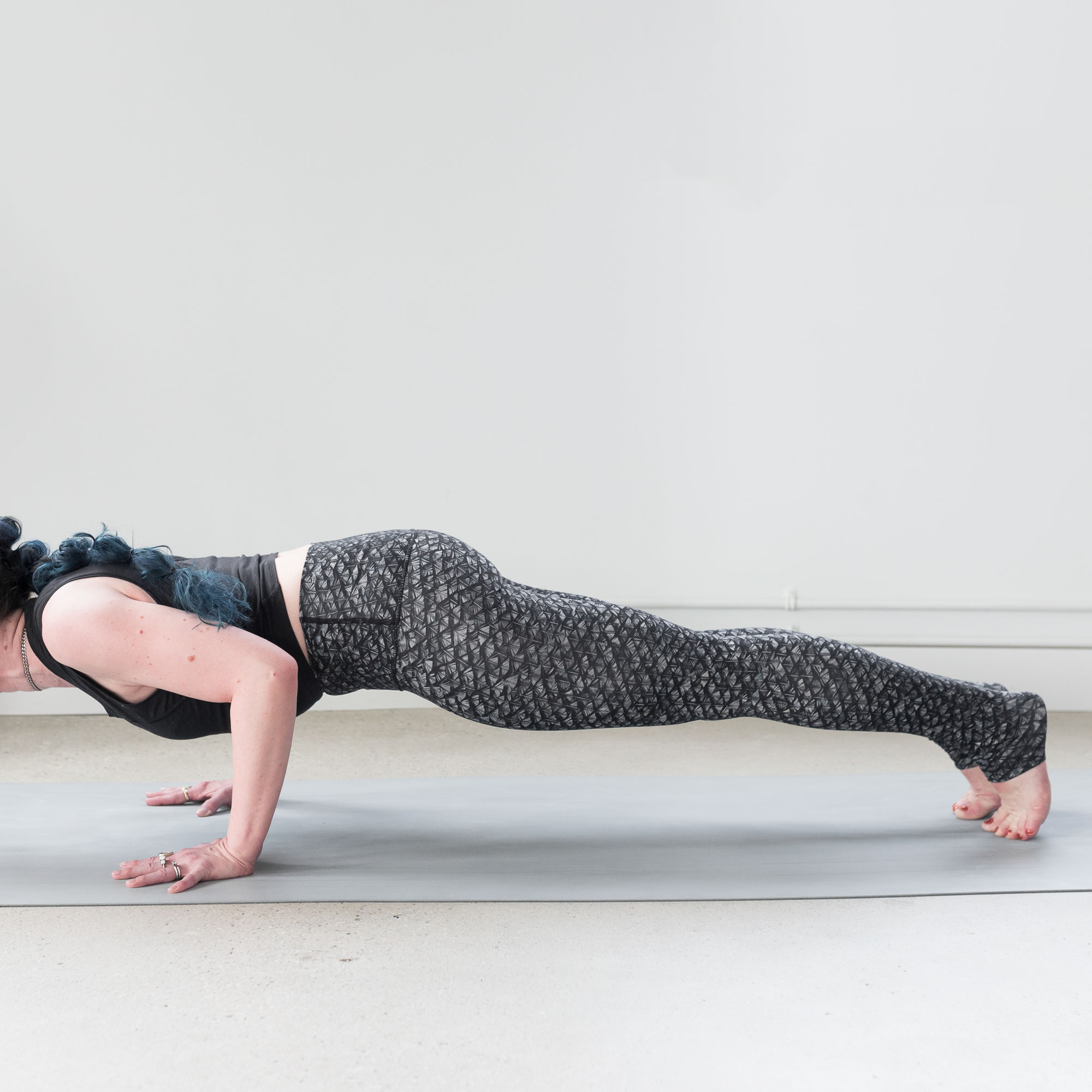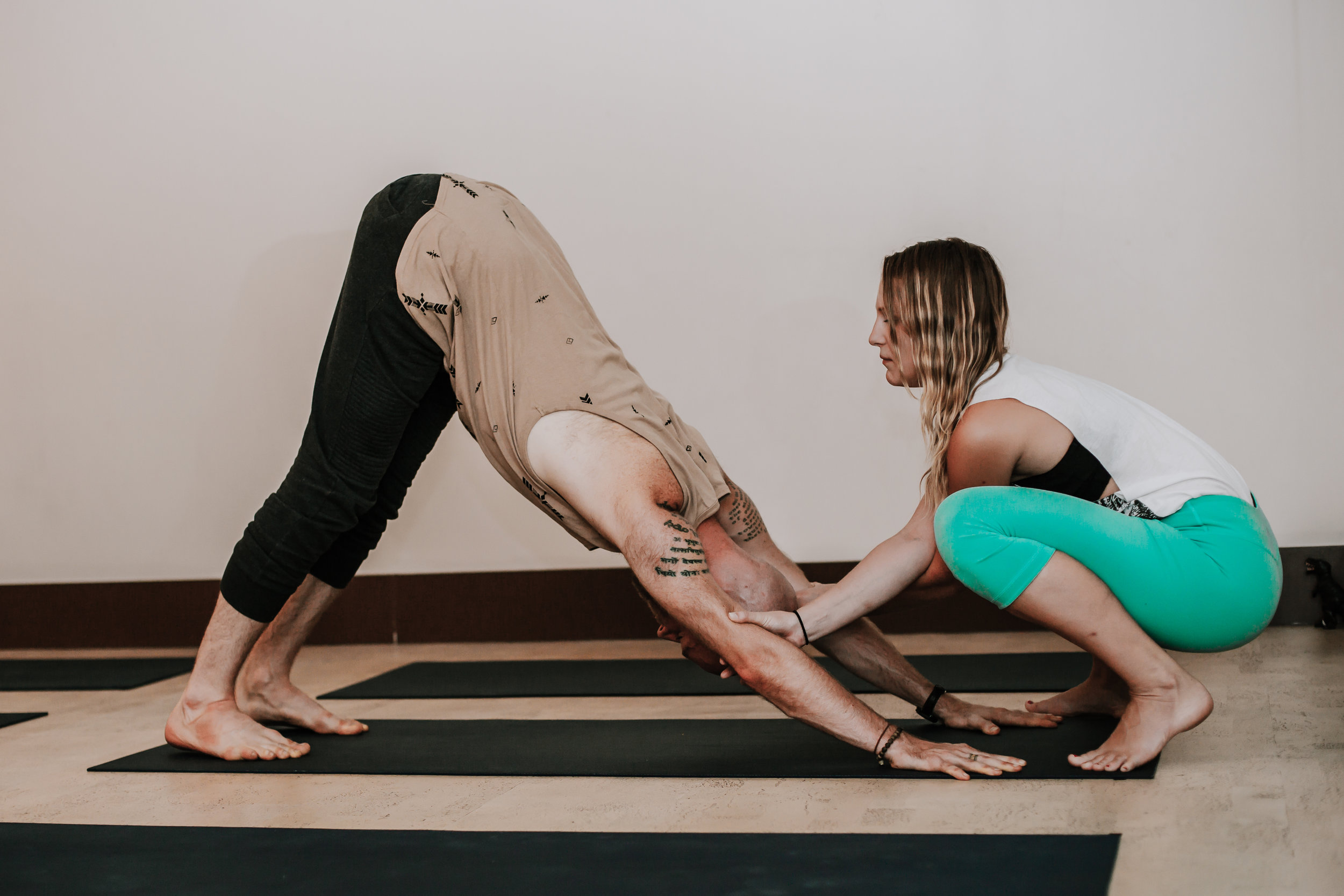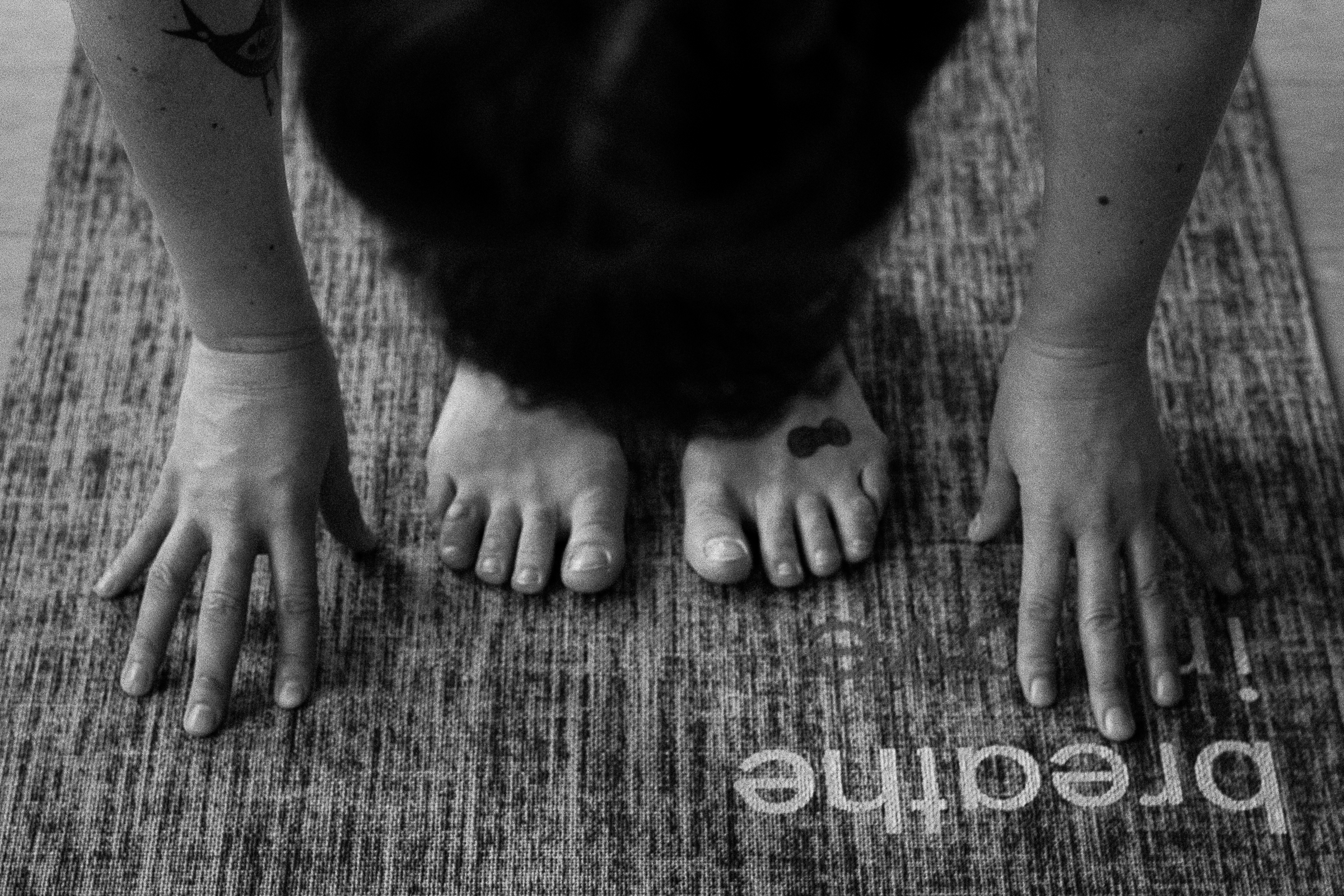The benefits of yoga for golfers! Including 5 poses to help your swing!
Yoga and golf may seem like very different activities at first glance, but they actually have a lot in common!
Both require a great deal of focus, balance, and flexibility, and both can be physically and mentally challenging. That's why yoga can be such a great complement to golf, helping golfers to improve their game and prevent injury.
Yoga and golf may seem like very different activities at first glance, but they actually have a lot in common!
Both require a great deal of focus, balance, and flexibility, and both can be physically and mentally challenging. That's why yoga can be such a great complement to golf, helping golfers to improve their game and prevent injury.
Below are some of the way yoga can benefit your body & golf game!
Improved Flexibility
One of the main benefits of yoga for golfers is improved flexibility. Golfers need to have a wide range of motion in their hips, shoulders, and spine to make a full swing, and yoga can help to improve flexibility in all of these areas. By practicing yoga regularly, golfers can increase their range of motion and achieve a fuller, more effortless swing. This can help to increase clubhead speed and accuracy, leading to longer and more precise shots.
Better Balance
Another key benefit of yoga for golfers is better balance. Golfers need to maintain their balance throughout the swing, and any loss of balance can lead to poor shots or even injury. Yoga helps to improve balance by strengthening the muscles in the legs and core, as well as improving proprioception (the body's sense of where it is in space). By practicing yoga poses that challenge balance, golfers can improve their stability and consistency on the course.
Reduced Injury Risk
Golf can be hard on the body, especially for those who play frequently. The repetitive motion of swinging a club can lead to overuse injuries in the shoulders, wrists, elbows, and back. Yoga can help to reduce the risk of these injuries by improving flexibility, balance, and strength, as well as promoting proper alignment and posture. By practicing yoga regularly, golfers can keep their bodies healthy and prevent injury.
Stress Relief
Golf can be a stressful game, especially when you're trying to hit that perfect shot. Yoga can help to reduce stress and anxiety by promoting relaxation and mindfulness. By focusing on the breath and staying present in the moment, golfers can learn to stay calm and centered on the course, even when things aren't going their way.
Getting Started with Yoga
If you're a golfer who's interested in trying yoga, there are many ways to get started.
Many yoga studios offer classes specifically for golfers, which focus on poses that are beneficial for the golf swing. Alternatively, you can start practicing yoga at home with online videos or apps.
At Yogalife studios we offer various classes for all preferences, these classes will incorporate some or all of the below poses. We recommend checking out a Vinsaysa flow class or a Yin class which poses are held for a longer period of time.
If you cannot make it in studio - check out our Video on Demand platform!
A few benefical yoga poses for golfers include:
Downward-Facing Dog: This pose helps to stretch the hamstrings and calves, as well as the shoulders and spine.
Warrior II: This pose strengthens the legs and core, while also stretching the hips and shoulders.
Child's Pose: This pose is great for relaxation and stress relief, and can also help to stretch the back and hips.
Triangle Pose: This pose stretches the hamstrings and hips, as well as the spine and shoulders.
This pose features a cork block to assist with balance & improving form while feeling the full benefit of this pose!
Yoga and golf may seem like an unlikely pair, but they actually have a lot in common. By practicing yoga regularly, golfers can improve their flexibility, balance, and strength, as well as reduce their risk of injury and stress. So if you're a golfer looking to improve your game, consider joining us for a yoga class at our South Edmonton studio!
Your body (and your golf swing) will thank you!
Break It Down: Vinyasa
VINYASA, TRANSLATED:
“To move or arrange in a special way”. It can also mean “movement” or “position of the limbs”.
Written by Kristine Owen Wood | Photographed by Caitlin Varrin
What is Vinyasa?
One term, many meanings!
Vinyasa, translated:
“To move or arrange in a special way”. It can also mean “movement” or “position of the limbs”.
Vinyasa, the style of yoga:
refers to a strong, dynamic, continuously flowing practice which aims to seamlessly integrate movement and breath. a.k.a, ‘Moving Meditation’: The relative quick pace of Vinyasa Flow with its emphasis on matched breath/movement and fluid transitions between poses allows many practitioners to relax habitual thought-loops and enter an embodied “flow state” of being. Same same but different? Styles of yoga at Yogalife which are synonymous with, derived from, or closely related to Vinyasa include “Ashtanga”, “Rocket”, “Sattva”, “Flow”, and the “Yang” portion of “Yin/Yang”.
Why break it down?
Vinyasa classes tend to move more quickly than slower styles like Hatha and in order to “keep the flow”, might not always provide as much in-depth alignment instruction. This can sometimes result in confusion for newbies! It can also create a situation where the most often-repeated set of movements are amongst the least fully-understood.
Potency of practice:
Developing a clear understanding of how to approach Vinyasa for your body, through your body, is essential for unlocking the full potential of your “flow state” experience. Below is a step-by-step guide to aid you in this journey!
Vinyasa, the flow of movement:
“Vinyasa” can also refer to a very specific cycle of poses that repeats throughout any of the above-mentioned class styles.
Rise & Shine!
Vinyasa will often appear first in the course of opening Sun Salutations as a method of evenly warming up the body.
The groove that binds us:
Subsequent Vinyasas alternately serve as fire-stokers, neutralizers, palate-cleansers, and an efficient, elegant method of transitioning from pose to pose.
Full Vinyasa, unmodified
Click on image for more details!
Half Vinyasa, unmodified
Click on image for more details!
Awesome Mods
Mythbuster: modifications are not in any way “lesser” the main pose. In fact, modifications are a highly intelligent way to adapt poses to meet your practice where it’s at and ensure that you build the space and strength you need to evolve, sustainably.
Forward Fold & Halfway Lift
Place blocks underneath hands = more room to stretch out backs of legs & lift through chest
High Plank >> Low Plank
Lower knees to floor = more power to practice correct upper body alignment & thus gain strength. Place blocks under hands to create more height & space in plank.
Upward Facing Dog
Cobra instead! All of the backbendy goodness without undue strain on wrists, low back, or feet. Blocks under hands = more space for spine to lengthen & curve.
Downward Facing Dog
Try Puppy Pose instead! An active version of Child’s Pose (press palms into floor & keep chest & shoulders lifted), it relieves hamstrings and takes pressure out of shoulders and wrists while maintaining energy. Or, place blocks under hands to create more length and space throughout the shape.
Whether you're in that full flow or working with modifications and props, there is a comfortable way to build strength through vinyasa for every yogi!
Listen to what makes your body sing and let that be what guides your practice.
Namaste
Wrist Pain & Yoga: Physiotherapy & Yoga Perspectives on How to Resolve
Yoga is a great form of exercise that not only incorporates stretching, but also mindful awareness of your body through movement.
There are many schools of yoga with a wide variety of different poses. One of the most common schools of yoga is hatha yoga. The movement sequences, or flows, in hatha yoga incorporate exercises where you need to put body weight through your wrists. For example, downward-facing dog is one such pose.
It’s not uncommon for some people to experience wrist pain when doing these wrist-loading exercises. Wrist pain when doing body-weighted yoga poses can be a result from an old injury, a muscle imbalance or overtraining. Although you may feel your yoga practice is limited because of this, don’t fear!
In this article, Innovation Physical Therapy & Yogalife are teaming up to bring you a complementary perspective on this issue.
Wrist Pain in Yoga
There are a variety of yoga poses that can load the wrists. Downward Facing Dog, Upward Facing Dog, Plank and Chaturanga are among the most common poses especially in a Vinyasa style class.
There are quite a number of bones that make up the wrist joint. 13 in fact! These bones work together to provide flexibility and stability to the wrist. Wrist pain can occur in a number of places, but the most common would be just below the thumb in the small divot that shows up when you spread all your fingers. As well, pain can commonly be experienced on both the front and back of the wrist.
Yoga Recommendations on How to Reduce Wrist Pain
When starting out in yoga, there is a common tendency to grip like a bear into the yoga mat. This can end up causing pain at the base of the wrist. When you’re in the plank position lowering down to Chaturanga (or half push up), your elbows need to stay close to your body. Your legs should remain engaged while you lower down to the floor. This will keep your weight distributed throughout the body rather than using only your hands to lower your body.
One of the main instruction cues that yoga teachers remind students during a weighted wrist pose is to focus on pressing down into the base of the thumb and index finger. This helps to take the pressure off of your wrist. When you’re starting out in yoga, it’s easy to lift your thumb and index finger off of the matt which causes excess tension and body weight to be translated through your wrist.
Another important strategy to reduce wrist pain is to activate your core a little more so your body weight shifts away from your wrists. It’s also important to not forget your legs. Activating your legs in any pose (even a handstand) will help you lift your weight out of your hands and spread it more throughout your body.
It can also be helpful to stretch your wrist muscles as well as opposing movement to help relieve any of the repetitive strain you may feel when practicing yoga.
If yoga students need to reduce or avoid weight bearing through their wrists then yoga instructors can adapt poses to help reduce wrist strain. This could include weight bearing through the forearms as opposed to the wrists (e.g.baby cobra instead of upward facing dog for instance) or using a closed fist (e.g. during chaturanga) to help maintain the wrist in neutral alignment.
Finally, it may be necessary to look at transitioning to a more gentle class style that has fewer wrist loading poses.
PT Recommendations on How to Reduce Wrist Pain
As physiotherapists, we focus on understanding the root of your pain and it’s no different if you are experiencing pain in your wrists during yoga.
It is hard to say what could be causing your wrist pain since we have not physically examined your wrists or upper body. But assuming no specific injuries, there is one foundational concept we find helpful in those with wrist issues during yoga.
The concept we want to share is the importance of opposing muscles sharing an equal amount of tension and length. Let us explain.
You have muscles on the front of your forearm (that let you grip) and muscles on the back of the forearm (that let you extend your fingers). These muscles cross the wrist. When one group of muscles tightens more than the other, the unfortunate result can be increased strain through your wrist joint.
We do a lot of gripping in life (writing, holding things, opening doors, lifting weights, etc) so it’s likely that your wrist flexors will become shortened in relation to your wrist extensors. This can strain your wrist and you may find yourself experiencing pain with yoga poses.
The solution: Start working on strengthening your wrist extensors. This Youtube video walks you through what this looks like. Low weights are ok (typically 1-3 pounds) and focus on working up to 3 sets of 15.
It goes without saying that getting assessed by a physiotherapist is important to understand what is going on. There are many other reasons for wrist dysfunction! Also you may experience numbness and tingling in your hand and fingers. This is something not to ignore and should be looked into.
Key Takeaways
We hope you found this article helpful bringing together two different perspectives on wrist pain during yoga. Here are your key takeaways:
- Engage your leg muscles while doing yoga poses so your weight can begin to move throughout the body and not just your hands
- Increase your contract pressure through your thumb and index finger during wrist load bearing poses so pressure through the wrist is reduced
- Balance the muscles that cross your wrist joint by strengthening your wrist
- Adjust your poses to take weight off your wrists
Next Steps
Need to dig a little deeper? We’d recommend you give Innovation Physical Therapy a call to get an in-depth assessment of your movement challenges. They have 6 physiotherapy clinic locations throughout Edmonton & Sherwood Park including Riverbend, Meadowlark, Belvedere, Namao, Sherwood Park and West Henday (January 2018).
For all our Yogalife guests, you can now benefit from Yogalife priority bookings, rates and access to their therapeutic facilities through our new Yogalife + Innovation Physical Therapy priority access program. Simply, provide your Yogalife member number at time of booking. Call (587) 524-8200 to book an appointment.
8 Ways to Improve Your Immune System Naturally
Anyone who suffers from hayfever will be as qualified as possible to attest to having a healthy and robust immune system. If you’ve got a seasonal allergy to the pollen of plants and grass, you’ll be well aware of your immune system going to work. Of course it’s not pleasant as you sneeze heartily and repeatedly and your eyes water incessantly, but it’s still good to know what your body is guarded against invaders and will dispatch histamines at a moment’s notice when a transgressor is detected.
Rather a shame that those pollen particles are a false alarm, but the immune system’s taking no chances!
For the rest of us, you’re probably not going to be aware every time you’ve got neutrophils on the march taking on bacteria, viruses, and the like but they go into action pretty darn often. Having a healthy immune system is very important for every human, and there’s natural ways you can improve the function of your immune system. Let’s have a look at them.
While there are no scientifically proven direct links between lifestyle and enhanced immune function, there’s plenty of evidence suggesting that making the following diet / lifestyle choices can help you have improved immunity, with the diet changes being particularly highly recommended by Sherri Danrin, a naturopathic doctor specializing in immunology and a regular contributor at YesWellness.
1. Eat A Diet High In Fruits, Vegetables, and Whole Grains, Plus Low In Saturated Fat
A very telling fact is that scientists have long determined that people who live in poverty and are malnourished as a result are more vulnerable to infectious diseases. This increased susceptibility is a result of micronutrient deficiencies, and in particular not getting enough zinc, selenium, iron, copper, folic acid, and vitamins A, C, B6, and Vitamin E. If you have reason to believe you’re deficient in any of these vitamins (click here for an easy quick-reference chart for vitamin deficiency syndromes) you can address them via dietary sources or quality supplements.
2. Exercise Regularly
Getting regular vigorous exercise – which means getting your heart rate up and breaking a sweat – is so beneficial for improving cardiovascular health, lowering blood pressure, controlling body weight AND supercharging your immune system to defend against viruses and disease. A large part of this is due to the fact that it promotes improved blood circulation, which allows cells and the different substance components of the immune system to move through the body freely and complete their job with maximum efficiency.
Important note; do not push yourself too hard when aiming to exercise vigorously. Know your limits of exertion, and if you need to take a break then take one. If you ever feel faint or can’t handle the strain, stop immediately.
3. Maintain A Healthy Body Weight
This point is added here immediately following exercise because one promotes the other, and they’re both helpful ways to improve your immune system naturally. And yes, that’s in large part because your circulation will be much improved when your hearts’ not working nearly as hard to pump blood throughout your body as it was before you lost body weight.
4. Control Blood Pressure
The important thing to understand here is that there is a relationship between prolonged stress and high blood pressure (hypertension), which in turn limits your immune system’s ability to product T-cells, which it uses to fight infections. Maintaining a low blood pressure will prevent your adrenal glands from being hyper stimulated and producing too much adrenaline and noradrenaline, which leads to a rather vicious cycle where the weakened immune system promotes more stress, which promotes more hypertension, which promotes further weakening of the immune system.
You get the idea, keeping your blood pressure at healthy levels and regulated is highly advisable here.
5. Get Sufficient Quality Sleep
By getting sufficient AND quality sleep, we mean a) getting enough of it (most people need 7 hours a night) and b), making sure you go through all of the 4 stages of sleep. As regards the second point there, the importance of getting through all of these stages is important as the N3 (3rd) stage is where you get your deepest and most restorative sleep and cellular energy is provided to the different systems of the body, including the immune system.
In order to establish a good circadian rhythm and get the best and most thorough sleep, try to establish consistency with the time you go to bed and wake up each day. Sleeping in on the weekends or days off may be appealing, but it’s best not to.
6. Drink Alcohol In Moderation and Don’t Smoke
This one will likely be fairly self-explanatory for you. Drinking alcohol heavily damages your liver, and the liver works to filter contaminants out of the body. When that’s not occurring effectively, the buildup of toxins and the like affects your immune system. And most of the many harmful chemical in cigarette smoke work similarly.
There’s a thousand reasons why you shouldn’t drink excessively or smoke, and this is just one more very valid one like all the other ones.
7. Be Proactive in Preventing Infections
This involves being smart and wary of know ways that viruses and pathogens are commonly transmitted to people. Wash your hands frequently, cook meats thoroughly, etc. Being very cleanly will keep you in good stead and boasting a nice tip-top immune system.
8. Be Wary of ‘Quick Fix’ Supplements
Many products on store shelves state that they will boost or support immunity, but in reality there really are not ‘quick fixes’ for boosting your immune system via under-the-counter supplements. Further, boosting the number of cells in your body — immune cells or otherwise — isn’t necessarily advisable. To put that in perspective, consider this; athletes who pump blood into their systems to boost their number of blood cells and enhance their performance run the risk of suffering a stroke. There’s no concrete definition of how many cells or what mix of them allows the immune system to function at its best.
No one likes to have their weekend wasted by the flu, being laid up for a month by mono, or anything of the sort. Your immune system is the last line of defense against all of these misfortunes, so make sure you do all that you can to ensure yours is primed to combat at full force all the time.
Yoga for Athletes
Yoga for Athletes by guest blogger, Carolyn Fallon.
Throughout most of my life I have been an athlete of some kind – whether it was participating in various sports in school or playing recreationally on different club and intramural teams in and after college. As an avid athlete, I find that there are other aspects that are part of being an athlete than just the physical skill that each particular sport calls for. There is a need for various characteristics personality-wise, but what I find is extremely important no matter what sport I am playing is the need to be fit and in shape in every way possible. As I have (yes, I will admit I have been out of college for a few years…) gotten a bit older, I have come to find that yoga is a great activity that allows me to be fit regardless if I am playing sports still, and also helps me have an edge over all the athletes out there that believe there is no “real use” for yoga!
Of all the workout styles, yoga is the oldest and most comprehensive practice combining weight-bearing exercise, cardiovascular endurance and meditation. Many people associate yoga with general fitness or just for people who “aren’t athletic”, but a growing body of literature on the effects of yoga on athletic training is changing this. Researchers have found a number of unique and positive results that have come from athletes adopting a regular yoga routine.
Yoga begins with a focus on increasing self-awareness. It starts with the control of breath. Once the individual has learned the use of different breathing styles effectively, these are incorporated into both static poses and dynamic movements that differ based on the particular school of yoga. Once these beginning aspects of yoga have been mastered, athletes can begin to use yoga to propel themselves past the workout plateau by increasing athletic strength and flexibility, while also protecting themselves from various injuries.
Yoga and Strength There are all kinds of ways that yoga can increase an athlete’s strength, training potential and even their recovery time. Just from the practice of controlling one’s breathing, results have been found in the increased strength of people’s grips. Additionally, as athletes become more practiced in yoga they will begin to move in to more vigorous types of yoga, such as power yoga and ashtanga, which will demand more exertion from them physically, and in turn improve their strength over time. Furthermore, because specific sports tend to emphasize certain muscle groups at the expense of others, yoga allows athletes to increase their core strength (and seriously, who doesn’t want that?!) and ultimately optimize their overall training efficiency!
Yoga and Flexibility Athletes have more to worry about than just muscle strength. The tendons, ligaments and other connective tissues of the joints must be trained to handle the extra work of the muscles. Unfortunately, athletes often face the reality of compromised joint health after only one or two decades of training! This problem is largely preventable with the practice of yoga. In fact, many orthopedic surgeons attest that yoga is excellent for strengthening both flexibility and balance. I think we can all agree that these are both pretty important aspects for any type of athlete!
Yoga as Injury Prevention
No matter what sport is involved, the constant movement and exertion that is expected of an athlete’s body can be exhausting. Exercising in general can make one’s legs, back, shoulders, and many other body parts feel sore and tight. Restorative yoga can help athletes to get back to their normal range of motion, which prevents future problems from occurring the next time they are active. Another benefit of yoga in injury prevention is the effect of increased circulation and reduced swelling which allows athletes to return to normal training without a hitch.
Yoga has so much to offer the modern athlete! It combines a body-focused meditation with complete joint and muscle workout, and has proven results that include better muscle coordination, faster recovery times, reduced fatigue due to efficient oxygen use, improvement to long-term joint stability and a reduction in athletic injuries. With so many benefits coming from the practice of yoga, what athlete wouldn’t want to try it out?!
The Yogi Coffee Guide
Our coffee guide today comes from Allie White, Transformational Holistic Health Coach and all-around wealth of knowledge in all things healthy and happy. Her mantra is clear: Helping fun-loving women experience a whole new level of energy, beauty, and confidence so they can create the body and life they love with ease. Grab a quality cup of coffee and enjoy!
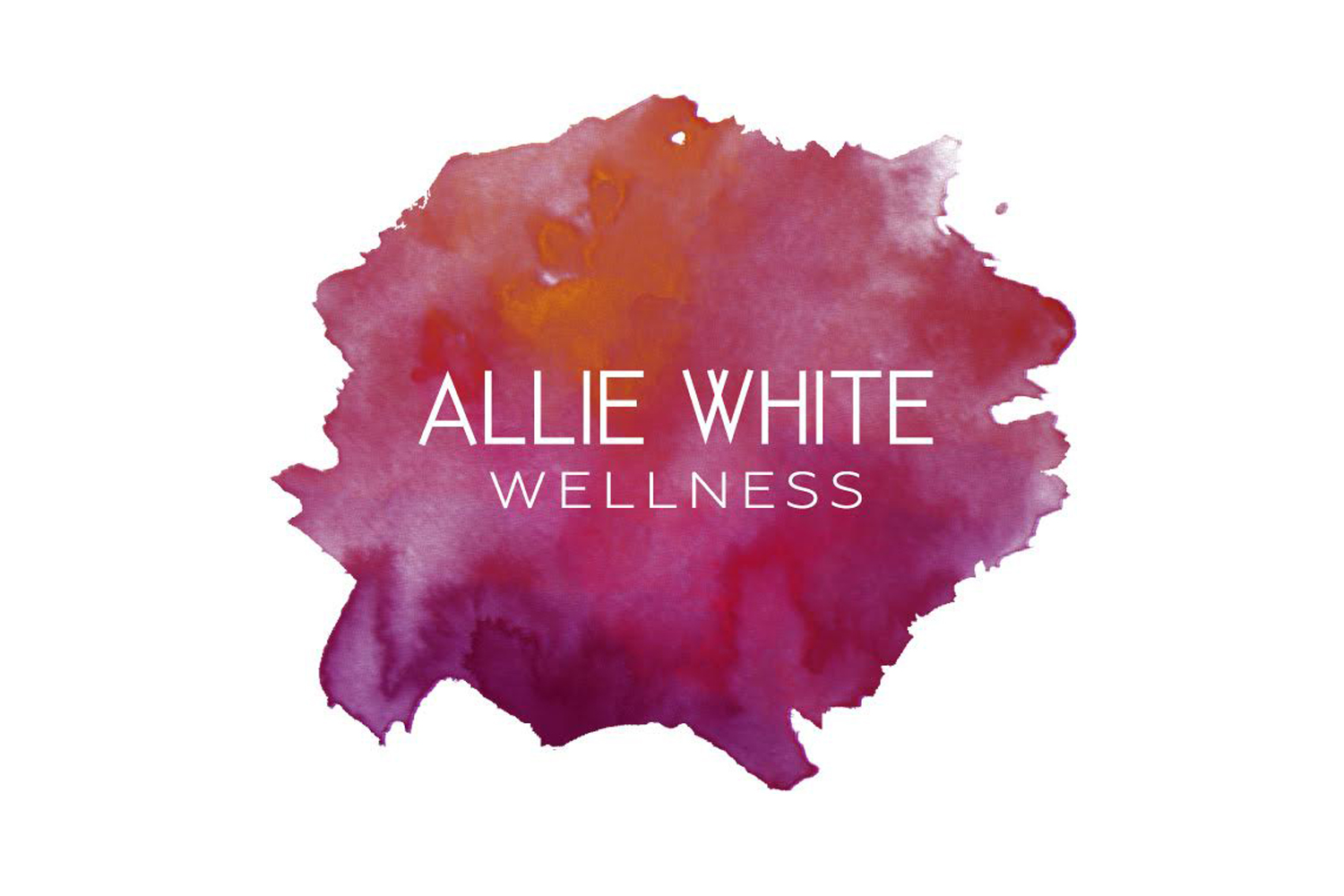
"How-To" Coffee Guide
Are you one of the many people wondering if coffee is healthy for you? There is so much conflicting information out there, it makes it difficult to know for sure if coffee is beneficial or detrimental to your health.
My answer is this: it depends on your unique individuality, your health struggles, and goals. (Not the answer you wanted, is it!?)
Depending on your situation, coffee can either be part of a healthy diet or really harmful, causing further health complications.
I’m sure you’ve heard about the many health benefits of coffee. Yes, they’re true! Coffee is loaded with antioxidants and full of magnesium; it can lower the risk of type II diabetes, help prevent Parkinson's disease, and lower the risk of liver cancer and disease. Sounds pretty good!
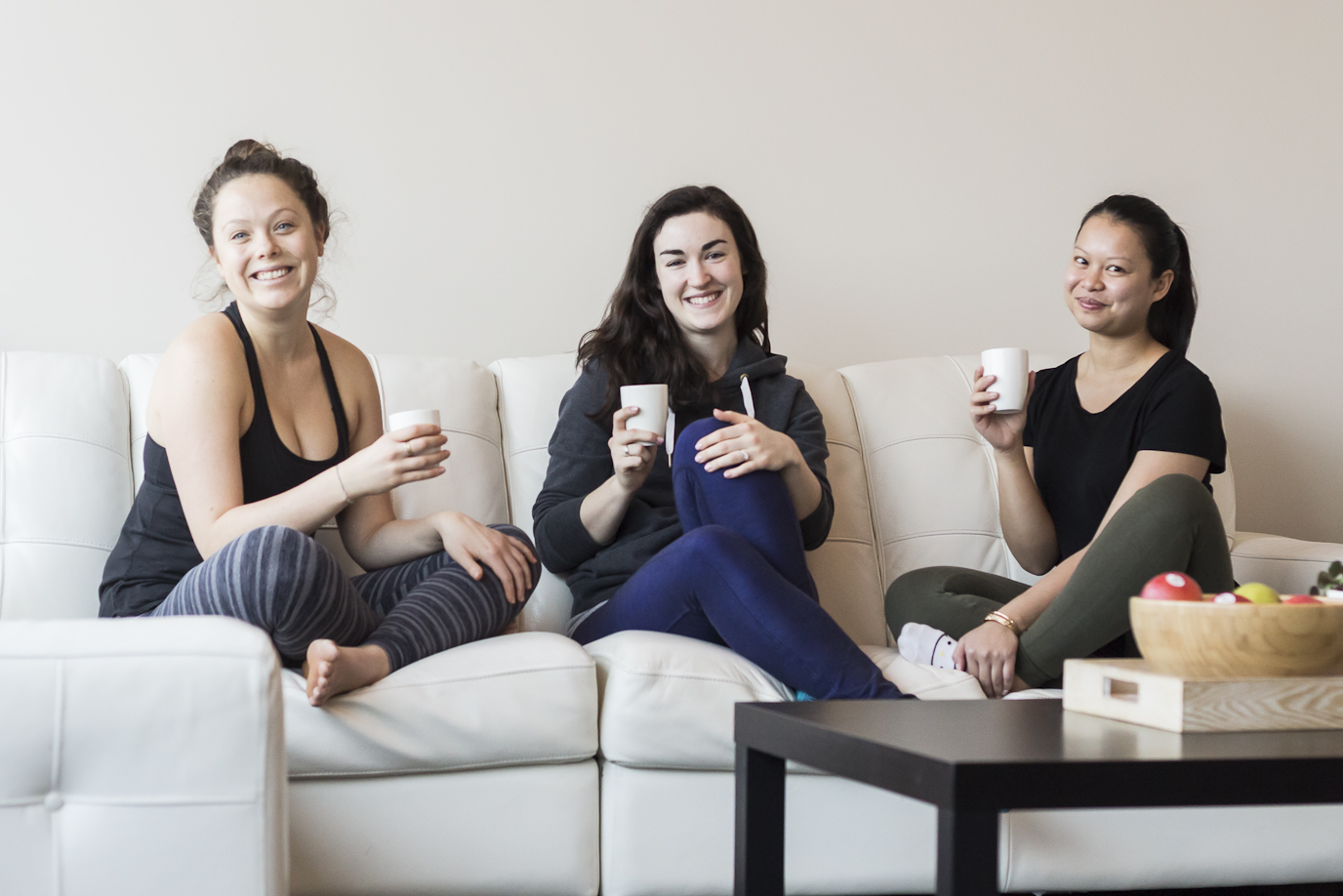
So if coffee is so healthy, then why aren’t you seeing the benefits?
There are two main reasons:
The quality of coffee
What you put in coffee
Quality: Pesticide Concerns!
Most coffee is very high in pesticides, which are linked to cancers, neurological disorders, and endocrine disorders (thyroid disorders, hormonal imbalances, adrenal fatigue, menstrual problems, and much more).
What We Put In Coffee: Chemicals, Creamers and Sugars….Oh My!
In addition to the pesticide concerns, there are two more components we put in coffee that keep us from experiencing its health benefits.
The first is sweeteners & artificial sweeteners:
Sweeteners: Putting poor-quality sweeteners in coffee adds unwanted chemicals AND calories. Case in point – Starbucks most popular blended coffee drinks rack up about 500-750 calories per 16 ounce serving. Most of that is sugar, which converts in the body to fat.
Artificial sweeteners: These sweeteners add to the chemical load of the body, convert into other more carcinogenic substances during the body’s own detoxification process, and increase the carbohydrate cravings. Yikes!
The second is poor quality dairy:
Most creamers or coffee lighteners that are sold as such are some of the lowest quality dairy products on the market. These may contain added hormones and/or antibiotics from dairy cows and chemical additives to replace the fat removed in low fat milk. If you think non-dairy creamers are a better choice, guess again. They contain hydrogenated oils (trans fats), casein, corn syrup solids, soybean, canola and/or sunflower oils, artificial flavours and colours, etc. (basically a storm of chemicals).
Here’s your three step magic coffee formula:
1. Choose high quality coffee - organic, fair trade, shade-grown.
2. Drink black or add: Teaspoon of organic unsalted grass-fed butter and/ or some coconut oil or MCT (medium chain triglyceride) oil. (I prefer organic, virgin, cold-pressed coconut oil.) * If you the blend coffee with butter or oil, it will get frothy and taste like a richer, healthier latte. Major yum! Sweeten with flavoured or plain stevia.
3. Do NOT drink on an empty stomach. Start your day with water, eat breakfast, and then enjoy your coffee. This will help prevent hormone and blood sugar imbalances that can lead to weight gain, insulin resistance, diabetes, and much more. Yes, this magic coffee formula is very helpful but it doesn’t solve every problem. Even if you follow this formula you still might experience harmful health effects from drinking coffee.
Should you quit drinking coffee?
While we’ve seen that coffee does have health benefits, the amount of caffeine that is present in coffee may be causing problems in your body.
If you have any of the following health challenges or concerns, you may want to consider reducing or eliminating coffee and caffeine.
You NEED coffee to function.
You have adrenal fatigue - you're exhausted all the time no matter how much you sleep, you never feel great and/or energized, exercise and other activities cause more fatigue. If you eat a highly processed, acidic diet including meat, dairy, alcohol, and sugar. Coffee is acidic and will further damage your liver and body leaving you more depleted. You have hormonal imbalances or blood sugar imbalances. Coffee gives you a JOLT of energy, followed by a crash, a headache, a stomach ache, and hunger.
If you said YES to any of these, you may want to reconsider your coffee habit. Switch to green tea for a while, unless you'd like to go cold turkey. Switching to tea not only cuts hard-to-digest, acidic dairy from your diet (if you drink latte’s), but also strengthens your immune system and gives a boost of antioxidants.
From there you can take it up a notch and give you body a complete break from all caffeine. Try going caffeine-free for a month to give your liver and body a break. After the month is up, do a coffee experiment. Have a small amount of black coffee after a meal and notice how your body reacts. Do you crash, get a headache, become irritable, and experience more cravings? If so, this is a sign you need to strengthen your liver and increase the mineral reserves in your body by eating a high amount alkaline foods (google "acid/alkaline food chart")
You may also want to consider the fact that coffee has a half life of about seven hours, meaning if you have a latte at 3pm the caffeine will still be in your system at 10pm when you'll want to be winding down for bed. Coffee after 12pm may prevent you from getting quality sleep. If you can, skip the coffee after noon and notice how if effects your sleep patterns. If you have insomnia or high stress, eliminating coffee can make a huge difference.
There you go! It’s time to get curious and tune in to what your unique body is telling you instead of looking outside of yourself and listening to a specific diet or what the “experts” are saying. Only you know what is right for your body. This can take time, so remember to be compassionate with yourself and have fun.
Foundation Friday: Downward Facing Dog
This post is an instalment in a series that delves into the basics of yoga—looking at its postures (asana), breath (pranayama), philosophy, and all the other essentials—giving you the foundations upon which to build a solid practice. This post focuses on the ubiquitous downward facing dog.
Foundation Friday: Downward Facing Dog
Pose, or "Asana" Downward Facing Dog, or “Adho Mukha Svanasana” odd-oh mook-ah shvah-nass-ah-nah (not to be confused with savasana)
Why do we practice downward facing dog?
Downward dog is probably one of the most prevalent of all yoga postures. Though it may not feel like one when you first begin practicing, downward facing dog is actually a resting pose, and is often offered as a break between sequences, or as a starting and finishing point in a flow, or vinyasa. This pose will likely be taught in your first-ever beginner's class, and will carry you through as you advance your practice—downward dog is a quintessential pose, so it's important to get your alignment, er... down!
Downward dog may help…
- Calm the mind, relieving stress and mild depression
- Energize your body
- Stretch your shoulders, hamstrings, calves, arches, and hands
- Strengthen your arms and legs, which acclimatizing you to weight-bearing in your arms
- Improve digestion
- Offer relief for sinus pain, headaches, insomnia, back pain, and fatigue
- Ease conditions of menopause, high blood pressure, asthma, flat feet, and sciatica, and prevent osteoporosis
Traditional Chinese Medicine and acupuncture tend to favour Downward Facing Dog for its activation and extension of the Bladder Channel, the longest channel in the body. According to their perspective, elongating the spine throughout this posture aids in strengthening immunity, among a host of other benefits.
How do I get there?
- Start from a table top position, on your hands and knees. Place your hands slightly wider than shoulder distance apart and spread your fingers wide.
- Turn your hands so that the space between your pointer finger and your middle finger points to the top of your mat.
- Press down through the four corners of your hands, especially the mound of your thumb and pointer finger, while gripping your mat with your fingertips.
- Tuck your toes under, and press your hips up so that your body looks like an inverted pyramid from the side.
- Squeeze your forearms towards each other, and roll your upper arms away from each other.
- Ensuring your feet are hip-distance apart, take a soft bend into your knees and press your heart back towards your thighs.
- Roll your inner thighs back and wide behind you.
- Tilt your sitting bones skyward, and draw your tummy in towards your spine.
- Hug your shins towards each other, and press your heels down towards your mat (but it's okay if they don't touch!)
- Look between your feet, shins, thighs, or upwards at your belly.
If this position is uncomfortable, you can:
- Place your hands on blocks if your shoulders are quite tight
- Prop a towel, rolled mat, or some small sort of padding underneath your palms to alleviate pressure on your wrists
- Take a bigger bend into your knees if your legs are tight
- Support your head with a bolster or a block
- Or, start from standing with a wall or chair in front of you, then bend at your waist and press your palms into a wall or chair instead of the floor. Progress by walking your hands lower towards the earth as the posture becomes more accessible.
We hope this helps you better understand the concept of downward facing dog. Please feel free to comment on our Facebook with any further questions. And let us know if you have something you would like to see featured in Foundation Friday!
So Fresh And So Clean!
Although many yoga students learn asana practice first, the ocean of Yoga has many teachings to offer. Pantajali's classical Eightfold Path places yama and niyama before asana; more teachings are categorized within these limbs as well (yogi's love their lists!).
These offerings may not be a common theme in a typical yoga class, yet it is important to understand the information and apply it to our practice.
The niyamas include 5 observances: Saucha (cleanliness of thought, mind and body), Santosha (contentment), Tapas (spiritual effort), Svādhyāya (self-study), and Ishvarapranidhana (surrender to God). Today we will touch on the first niyama, Saucha.
As yogis we understand the importance of clean thoughts and intentions; our limiting words and judgements are a nasty byproduct of the ego. Committing to cleaning up your thoughts, words and actions cleans up your energy, your life. With less clutter we can flow through life with greater ease and clarity. With this cleanliness everything becomes easier.
Purity IS health! We can think of this quite literally, finding that perfect cleanse, keeping our homes clean, and caring for ourselves properly.
When we step onto our mats alongside perhaps 40 or 50 other sweaty yogis, saucha is incredibly important to maintain the respect and comfortability of the room. Honour yourself and your fellow yogi by keeping your props tidy, your mat lined up, and above all your personal hygiene tended to. Just as we expect a fragrance-free studio space, we ask that you come with an awareness of your personal saucha. Obviously things are going to get sweaty, that's the point!! But ensuring that you are coming in decently showered and such will keep the space enjoyable for all.
Friendly etiquette reminder and philosophy lesson wrapped into one! Thank you and namaste.
Essential Cyclist Asanas
This month we are joining along in the YEG celebration of cycling! As yogis, we know how incredibly essential it is to honour our bodies with the right movement, finding balance after rigorous activity. Yoga, in all its magnificence and splendour, is the perfect compliment to pretty much anything; give me a side of asana before and/or after a long ride and I am a happy camper!
Yogi and endurance athlete Josh Schrei shares the following:
Pedalling long hours astride the saddle with the neck up shortens the spine and causes tightness in the lower back, sacrum, and hips. The neck and jaw can lock up, too. Good posture and stretching will help diminish these after-effects of serious rides.
First, look at your posture in the saddle. Focus on lengthening the spine—be conscious of keeping space between the shoulders and neck. Also, lift the navel to engage the lower abdomen. This will keep the support in your core to protect your lower back.
Second, do these four yoga postures every day to stay loose and maximize your potential on the bike.
1. Cat/Cow
Cat/Cow brings length to the spine in both the forward- and back-bends, working out stored tension from cycling.
2. Downward Facing Dog
Downward dog will not only open the lower back, it will also strengthen it, giving you structural support when you’re on the bike.
3. Chair Pose Into Forward Bend
Like Downward Dog, this pose alternately strengthens and opens the low back and hips. It also lengthens the upper spine.
4. Plow
This pose will open up the whole spine, particularly the sacrum at the base of the spine.
adapted from outsideonline.com
What are you favourite post-cycle stretches? Connect with us on Facebook, Twitter and Instagram. Happy riding!
Curious About Kale?
Every so often there seem to be these "all the rage" foods that come along and flood our radar. The current superstar on the block? BEAUTIFUL LEAFY GREEN KALE! Whether you're ordering it at a restaurant, cramming it in your smoothie or massaging it for salad, there is a reason this vegetable is getting serious attention. Here's 10 facts about kale that may get you on board or confirm what you already know.
1. Kale is low in calories, high in fiber and has zero fat. One cup of kale has only 36 calories, 5 grams of fiber and 0 grams of fat. With its high fiber content, it aids in digestion and elimination and is also filled with so many nutrients, vitamins, folate and magnesium.
Cleansing Your Vessel
I just finished my lunch and it was DELICIOUS. I chewed slowly and enjoyed every single bite. This was day one back on a regular eating schedule after a 9 day colon cleanse that included 5 days of no solid foods. During this 5 days I only ingested a powdered combo of bentonite clay, psyllium husk, apple pectin and ginger shaken up in 8 ounces of organic apple juice followed by all the water in the world. I dumped this stuff down my throat starting right when I woke up in the morning and then every 3 hours after, 5 times a day. I would consider this an extreme form of cleansing but my conditions that led me here were also extreme and this was sort of my last resort. We'll get back to that.
In hindsight this was one of the best things I have ever done for myself and will complete this same cleanse at least once a year.
Let's rewind a moment and start thinking about the idea of cleansing and restoring the body. As we move into Spring (internally and on the calendar, not outside) we are entering a time of renewal. After a long winter of hibernation and perhaps lethargy, it feels really good to start sloughing off some of the excess.
In winter we nourish and conserve our qi (life force) so we are ready to burst into this next phase of growth and awakening.
Various healing methodologies (Ayurveda, Naturopathy, Traditional Chinese Medicine) know that our energy mirrors that of the changing seasons. Just as little green buds (eventually) pop from the trees and bring new life, our internal regeneration process is craving detoxification and cleansing so that we too can emerge with new buds.
So back to the colon cleanse... I chose Blessed Herbs (available at Noorish or online) which comes with a shaker jar for my 5-times-daily concoction, all the little packets easily divvied up as well as digestive stimulator capsules (a fancy way of saying laxatives) and my user's guide. This cleanse is intended to be simple and straightforward and I really appreciated the amount of positive feedback and testimonies (alongside some serious pictures of people's "success") available on their website.
In the past two weeks I have learned tons about my colon and have delighted in sharing this knowledge with others (perhaps against their will!).
In most vertebrates, the colon is the last part of the digestive system. It is responsible for three functions: absorb sodium and water, incubate beneficial bacteria and eliminate waste. Amazingly is it a little more than five feet long and hosts ten times the amount of bacteria in the intestines than there are cells in the human body. THESE are the kind of facts your friends and family can't wait to hear!!!
The following is information that I found quite fascinating from my user's manual:
It is common after years of eating to build up mucoid plaque on the walls of our intestines. This plaque greatly lowers our ability to absorb nutrition and makes our bodies much more toxic. Mucoid plaque may be a layer or many layers of adhesive, hardened mucus lining the inner walls of the digestive tract. It can be from less than one-sixteenth of an inch to several inches thick. It is usually compacted with old fecal matter, bound up toxic waste, 'bad' bacteria, and/or unwanted guests. The plaque can vary in length anywhere from a few inches to, amazingly, over three or four feet.
Even re-reading this information gets me so excited that this CRAP is out of me! (I had to have at least one pun in here, come on.)
But seriously, better out than in. My main personal reason for completing this cleanse and thus starting on the road to cleaner eating in general (including no wheat or dairy) is because I have suffered from eczema for years and years: 15 of them, on and off. Often, the state of your skin is a reflection of what's going on in your digestive system and how well your body eliminates waste. After this past few-month bout with eczema I am surprised I even have skin left on my arms to heal... but this body, just like yours, is an amazing vessel. When you let yourself be healthy and give in to what actually needs to happen, IT WORKS. I am ecstatic to report that my eczema is 95% GONE and I feel more energetic and alive than ever. When you make a commitment to health, you heal.
"I easily release that which I no longer need. The past is over and I am free" - Louise Hay
If you have any other questions about colon cleansing, eczema, eliminative diets, cleansing in general, never hesitate to email me at caitlin@yogalifestudios.ca
Is there another cleanse you'd like to see featured on here? Let us know!
Inner Glow Nutrition: Your "Self-Realization" Diet
We are really excited to announce our new guest blogger,
Nutritionista and Natural Foods Chef - Kristin Fraser!
Kristin, a former mechanical engineer, took the plunge and trained in New York City at the Natural Gourmet Institute as a Natural Foods Chef. She is a Certified Holistic Nutritionist as well as Living Foods Instructor and is here to share recipes, education and fun around health and nutrition. Check out her website www.innerglownutrition.ca for more wholesome goodness and to download her free recipe package.
Here she shares one of her favourite cookbooks and some insights on how food can affect your own self realization.
Your “Self-Realization Diet”
“Food is a mirror: Look into the mirror of what you eat, and you will learn to see yourself.”
– Unknown.
It’s not easy being a health nut – you know, staying on track, avoiding all those temptations you used to love, working at dealing with stress in different ways than you are used to. Slug back a beer or go to yoga… hmmmm… But it sure isn’t easy NOT being one either - having to deal with excess weight creep back or digestive disturbances from poor food choices, or getting what I call “food hangovers” from eating too much sugar, consuming too much caffeine or just eating straight up too much junk.
I am consistently humbled by the social workings of the world and how choosing health still seems to be outside of the “norm”. It’s much more normal to fry up the bacon, drink a beer, eat a bunch of cupcakes and puff back a cigarette than to engage in all these healthful activities like eating fresh fruits and vegetables, avoiding sugar and alcohol and practicing yoga or meditation.
It can all seem so boring to some. Well – some more so than others I suppose. But all these negative eating habits can also go hand in hand with emotions like irritability, anxiousness, complacency, or moodiness. When you eat clean, yoga it up, drink lots of fresh water, and spend time in nature you feel amazing, positive and content. Less complaining and more time to self reflect and ask “What can I offer this world?”
In Caroline Marie Dupont’s book “Enlightened Eating” (one of my staple fave recipe books) she goes into not only some delicious ways to prepare whole plant based foods, including desserts and treats but shares a much bigger aspect of what food can bring to your life… what she calls a “Self-Realization Diet”. I love her story because I can completely relate. She writes:
“In our shift to a vegetarian whole foods diet, we received many benefits such as increased energy, better digestion and elimination, and improved health in general. However, other unexpected transformations occurred for me – I connected with a deep longing for meaning and authenticity in my life. I seemed to be more aware, more alive, more curious about who I was and how I could fulfill my purpose here.”
Not that everyone needs to be a vegetarian to be healthy or experience the shift, but having the awareness that food not just affects energy but how your choices affect your emotional and spiritual wellbeing as well is an important and ongoing step.
When you cut out sugar and refined foods you start dealing with the real emotions behind why they were consumed in the first place. There’s a whole lot of self love that needs to come into play and when they break through that – the real glow starts to shine through.
And not from a buzz from a few beers or a high from sugar, but from the pure essence of your “true self”. Think about some dietary changes that you could make to stay on your true path. Are you experiencing your self realization diet?
Rest & Digest
How to cure digestive woes? It is a life style. It is NOT a momentary diet, though these can be helpful to get the digestive system back on track. If we want to truly nourish our health, it is through our food and it is over our entire life span from the moment we choose to be healthy to the moment we pass on.
It is healthy living, it is choosing to love yourself so much that you only want to put good things into your temple/vessel/body.
People change their diets when they are pregnant so that the baby has a chance to come out healthy, but why do we ourselves not want to be healthy? Marketing? Corporations tell us otherwise? If you are truly wanting to uplift your digestion, you must uplift your Self first, so eating healthy comes from a place of truth and yearning for well being, not from a place that wants to be skinny so that other people will think you are perfect.
It is meditating so your mind is clear and free of desire, it is avoiding rag mags, tv, and general advertising that makes you think you need to be anything more than your truest self.
At the core of your being, you want to live a fruitful, healthy, happy life and I can guarantee you, that truth does not say " I want McDonald's."
Amen, Namaste, Om Sarah Z
Sarah is leading the upcoming 'Digestive Restore' workshop at Yogalife Studios North this weekend. This session is full but please stay in touch at info@yogalifestudios.ca to learn about her next one!
10 Messages Your Body May Be Sending You on Your Mat - Are You Listening?!?!
Adapted from Karen Fabian:
"If it doesn't challenge you, it won't change you." "You are beautiful and perfect just as you are." These are just a couple of concepts that I often teach on. Please read on to discover how you can learn to love yourself and your practice even more.
Sometimes when we practice yoga, it’s all we can do to get to the mat. We start practicing, our body is tired, our minds wander and we’re distracted and not focusing on the mind/body connection. Even in the best of practices though, we may also feel somewhat disconnected. We’re dealing with information overload: between social media, the news, our personal schedules and any pains in our body that may have disrupted the passage of messages from our heads to our body.
It’s important to hear the messages our body is sending. This can be the difference between feeling good and feeling great. Sometimes our body is sending us messages but we’re not clear on what to do because we’re new to the pose or to yoga in general.
So, inspired by these thoughts, here are 10 things that may pop up in your sensory body that might be worth listening to:
Is Downward Dog supposed to hurt my hands so much?
From a teacher’s perspective, this is one of the most common messages I’ll bet your body may be sending you, but you’re not sure what to do. If you’re new to yoga and feeling this, you’re probably wondering how anyone could enjoy this pose.
Bend your knees and leverage pushing down into your palms to literally rebound up the sides of your body, pushing your hips up and back. Remember to keep your knees bent a little so that you can draw the weight out of your hands and into your legs. Do this with great awareness so as not to overstretch the hamstrings or create tension in the low back or shoulders.
How can I stop my arm from shaking in Side Plank?
Here’s another pose-related message that I frequently see students struggle with while in class. Turning to the side puts tremendous pressure on the shoulder. Unless the shoulder is stacked over the wrist and/or the knee is down, you may experiences shaking in the supporting arm. Take this modification and you’ll experience less shake while building more strength.
It’s so hard to hold this Triangle Pose. This can’t possibly be right. Triangle pose is a stretch for the inner thighs and sides of the body but it’s hard to experience that sensation if you’re hanging over the front of your leg. Feeling good in this pose is additionally complicated by placing a block in front of the foot instead of behind it. In order to create the alignment of your joints needed to be comfortable, only bring your hand down as far as you can keep the upper body aligned with the front thigh. With this alignment, you’re not fighting gravity and can experience great stretch.
Why is it so hard to reach this block? This is hardly helpful. I often see people grab a block and the lose alignment by placing it too low or struggling to reach it with their fingertips versus using two or turning it on the higher end. Blocks are meant to give you greater stability not create more struggle. Listen to those messages and use more or turn them on their shorter sides.
My hamstring feels like it’s going to pop right out of my body. In our zeal to create flexibility, we may sometimes ignore the messages our body is sending us to let us know that we’re pushing too hard. Muscles should feel stretched evenly throughout the muscle but not to a point where we feel a strong sensation at the beginning or end of the muscle. Bend the knees or make other modifications to the part of the body in question to lessen this sensation.
I can’t breathe. Heated power classes can sometimes result in this feeling and can create anxiety for students. Even in non-heated classes, a crowded class or one where a student is experiencing anxiety for other reasons (yoga-related or otherwise) can trigger a sense of panic. Take a moment to listen to this message. Rest in Child’s Pose. Leave the room for a breather if you feel you need a break but do so mindfully.
I’m so tired. Sometimes, our practice helps us realize we’re really tired. While this seems obvious, as people often complain all the time about how tired they are, this is a deeper awareness; one that only comes after some time on the mat. It can be deep to the level of the bones or may just be an awareness that our mind is constantly moving.
During practice, modify and take time to rest. Give up the urge to keep up or compete with those around you. Meditate at the end of class on what else is going on in your life that could be contributing to this feeling.
Why am I having such a hard time keeping up? In any class we may feel the urge to keep up with those around us. In the midst of doing this, we may feel discouraged and start hearing voices that tell us we’re not good enough or ready for yoga. In these times, we need to practice compassion for where we’re at in our practice. We need to look for ways to make the practice fit our body as it is right now and let go of the need to compete.
I bet I could do this pose. Just as we need to allow for rest and compassion, we also need to listen to that inner voice, as small as it might be, that we could actually do the pose that is being presented. I know lots of students who think they can’t do a particular pose because they’re new, or not flexible or not strong enough. It’s only through trying that we will ever know. Bring your healthy attitude and see what’s possible.
I really feel good. Sometimes it’s easy to look at the glass as half full. We wanted to do a particular pose; we wanted to feel particularly graceful and did not. But sometimes, in the depths of our final rest, we may hear a voice that says, “ I feel great.” This is the magic of yoga.
Listen to that voice and from it, draw strength. You are beautiful, you are strong and you are perfect just as you are.
Debunking 8 Fitness Myths!!!
Each day I get at least a handful of press releases sent to me — new products, recent studies, contests, requests for me to share info… you name it, I’ve probably gotten an email announcement or press release about it. As we move into Autumn, we tend to spend a lot more time indoors and more time may be spent at the gym, as we prepare for "hibernation." With that in mind, I know how frustrating it can be to "spin your wheels" or have a bit of false information or fear-based info. SO, here are the top 8 myths that the Canadian Exercise Journal has hoped to clear up!
Myth #1: Stretching before exercise reduces the risk of injury- False. The scientific literature of the past decade fails to support stretching before exercise as a successful strategy for injury prevention. However, research does support stretching at other times, including post-exercise, to reduce injury risk.
Myth #2: Walking a mile burns as many calories as running a mile. – In our dreams. While walking is a great physical activity, it does not require as much energy as running. Research has shown that running has a 40 percent greater energy cost compared to walking. That means you burn more calories when you run.
Myth #3: Lactic acid causes acidosis and muscle fatigue during exercise. – False. This century-old myth, linking lactate or lactic acid to fatigue, is the result of a scientific misinterpretation that has prevailed through the years. Lactate does not cause metabolic acidosis. Furthermore, it is useful in the performance of exercise at high intensities.
Myth #4: Lower-intensity exercise puts you in the fat-burning zone, so it’s preferable to higher-intensity exercise. – Wrong. The “fat burning zone” at low intensities of exercise doesn’t even exist! The best approach is to think of energy expenditure as a calorie is a calorie is a calorie, rather than partitioning into carbohydrate and fat calories. To burn maximum calories in support of ongoing weight loss, progress to a moderate-intensity/higher-volume exercise program and include interval training.
Myth #5: Morning workouts increase metabolism better than workouts performed later in the day. – Wishful thinking. Research has clearly shown that total energy expenditure is equivalent across different meal and exercise orders. Therefore, the decision to exercise in the morning should be driven by personal preference rather than any false hopes that greater weight loss will be achieved by exercising before breakfast.
Myth #6: Muscle weighs more than fat. – Not true. Muscle does not weigh more than fat. A pound of muscle weighs the same as a pound of fat. The difference is their density. As we lose fat and gain muscle, weight may change very little, while body volume decreases as we become leaner.
Myth #7: Women who want to avoid looking bulky should avoid resistance training. – False. Resistance training does not cause women to get bulky. In fact, it is virtually impossible for women to get as big (i.e., bulky) as men due to physiological differences, such as lower levels of testosterone.
Myth #8: Spot reduction really works, especially if you want six-pack abs. – In our dreams. Research shows that if a vigorous, high-volume, core-training program is performed, fat will be reduced in the abdominal area, but not selectively. A lean midsection requires, then, a total program of core, resistance and aerobic exercise—not just a focus on the abs.
We sincerely hope this helps as you move forward in any of your fitness endeavors!
Overcoming Mental Blocks for the Upcoming Running Season
From www.runnersworld.com
With the upcoming running season ahead, here is some really great information on how to overcome some of those mental blocks! At Yogalife we definitely promote balance, and while running may not be the best balance for yoga, yoga is a wonderful way to balance out your running! Runners often gravitate to our Hot Yin classes, or even our yoga for athletes/runners that usually runs in the summer. And if you haven't trained properly, your concerns are valid. But other worries–especially those triggered by outside influences–can create a self-defeating sense of intimidation. These doubts go deeper and are rooted in negative emotions, says Windee Weiss, Ph.D., a sports psychologist who is an associate professor at the University of Northern Iowa School of Health, Physical Education and Leisure Services.
"Realism accepts that a demand may be tough but doesn't place a judgment on it," she says. "Intimidation assumes you won't have the goods to meet the demand."
Failure-oriented stress can cause a host of problems. It can tighten muscles so that they fatigue faster, hamper coordination so you can't find your stride, distract you from your goals, and undermine mental toughness. Here's how to get past common sources of intimidation and run your best, without doubt.
Faster runners
They're everywhere–at the starting line, on the road, among your running buddies. Don't just stew over others' times–tap their achievements for inspiration. Catherine Andrews of Washington, D.C., felt fast among friends but recently joined a running group of six-minute-milers knowing she'd be a laggard. "I joined to be more motivated," she says. Andrews soon stepped up to tempo work and speed running. "It made a difference within weeks," she says. If you can't embrace a faster group, at least quit comparing. "Focus on the true satisfaction of running the way you want to run," Weiss says.
A tough course
When Beth Strickland of Brooklyn completed her first marathon at Walt Disney World in 6:33, friends prodded her toward the San Francisco Marathon. "It has a six-hour time limit and many hills," she says. "If I tried and didn't make it, I'm not sure I'd attempt another." While Strickland decided to tackle one or two flatter courses first, sports psychologist Cindra Kamphoff, Ph.D., cautions against getting derailed by general impressions. Instead, prepare. Use online street-view maps to review a course's geography. If hills are the issue, make them part of your weekly training. Practice mantras to keep your inner dialogue positive.
People who train more
Banish guilt over your presumed lack of dedication by acknowledging that your training reflects your life, not someone else's. What's more, training needs are different depending on one's goals. If you're truly not satisfied with your results, you'll have to change your training. "No amount of confidence-building will improve your performance above what you've trained to do," says Doug Hankes, Ph.D., a sports psychologist for the athletic department at Auburn University.
The idea of a first race
"A first-time 5-K can be more daunting for a beginner than a marquee marathon is for an experienced runner," Hankes says. "There are many more unknowns." So take comfort in your courage to sign up in the first place. Talk to seasoned runners about their experiences. "Ask what they think would have been helpful, looking back," Hankes says. But keep the stakes low and focus on having fun. On race day, try running with a friend. "Tying your pace to someone else's takes pressure off," Weiss says.
Entering a mega-race
TV cameras, elite athletes, mobs of people, online tracking, mythic features (think Boston's Heartbreak Hill)–they're all distractions. "The essence of mental training is getting your head out of the way and letting your body do what it's trained for," Hankes says. Build a routine that makes every race feel familiar, honing elements like the amount of socializing before the race, your music playlist, and mantras geared to different sections of the course. Defuse pressure to perform by imagining life a week later. "Don't make the race more than it is," he says.
Saying "I'm a runner"
Even after running her first half-marathon last fall, Beth Probst of Iron River, Wisconsin, says she feels uncomfortable calling herself a runner. "I like to be good at what I do," she says. "If I'm not trying to be a runner, I don't have to justify being mediocre at it." Runners of all levels often equate the phrase with speed. But in reality the words represent a lifestyle. Probst should embrace her new identity, says Kamphoff, of The Runner's Edge in Mankato, Minnesota. Acknowledging one's effort has benefits: "You start eating better, boosting core strength, telling people about running," she says. "That's what makes you a 'real' runner."
Rewire your brain
Fears and doubts are natural. But dwelling on them–or ignoring them–can prevent you from improving, says sports psychologist Doug Hankes. Be on the lookout for the following warning signs that your fears are holding you back.
1. You're focused on potential race outcomes, and not the process of improving.
Sure, there's a chance you won't set a PR in a race. But your training time is better spent focusing on confidence-building workouts like tempo and long runs rather than worrying about "what if's."
2. You're ruminating about the source of your intimidation.
Performance anxieties need to be dealt with before race day. ID your trouble zone and practice ways to conquer doubts. For example, if in past events you've slowed down in the final stretch, finish the last mile or two of each workout fast.
3. You're questioning your commitment to your sport. Sounds like you've forgotten or misplaced the joy of running that once motivated you. Temporarily set aside any time goals and spend your next few workouts having fun. Do whatever you can to ditch the stress of "performing."
Use Your Heart as a Wall: Make It Stronger Instead of Shutting Down
 We have all felt it - heartbreak. Ugh. What an ugly word. Maybe it was from a significant other, a spouse, a friend, a business partner, etc. Whatever and whoever it was, it likely wasn't easy. This article is just a story on some insight of an experience the author had. Ultimately, the purpose of all of the hurt ends up working the muscle of your heart, and making it stronger. But only if you're open to it. What I do want to share, is that perhaps you are reading this article, and there is someone you know going through this. If, so, PLEASE remember this...“Sometimes people put up walls not to keep people out, but to see who cares enough to break them down.” - Brandon
We have all felt it - heartbreak. Ugh. What an ugly word. Maybe it was from a significant other, a spouse, a friend, a business partner, etc. Whatever and whoever it was, it likely wasn't easy. This article is just a story on some insight of an experience the author had. Ultimately, the purpose of all of the hurt ends up working the muscle of your heart, and making it stronger. But only if you're open to it. What I do want to share, is that perhaps you are reading this article, and there is someone you know going through this. If, so, PLEASE remember this...“Sometimes people put up walls not to keep people out, but to see who cares enough to break them down.” - Brandon
Adapted from Stewart Snyder.
“The pain you feel today will be the strength you feel tomorrow.” -Unknown
“I’m done here. It’s time for me to move on,” she spoke softly as if unsure herself. For a moment, I swore she said “I’m not done here,” but she didn’t. She was leaving me.
The poison in the words numbed my body and my soul. All of a sudden, there seemed to be a big hole where my heart used to be. Survival mode kicked in and I started protecting that “empty” space. For me, it was isolating myself from social situations, even work. I sunk myself into spiritual reading, grasping for any words that might fill the hole. This was the first time I had felt it. Heartbreak. This was my first experience feeling something so painful that I fell into the cycle we all do.
In Your Own Defense
That sense of an empty heart is something all of us are familiar with. When we are hurt, we immediately want to protect ourselves. We change some behavior to act as a defense mechanism for the “next time.” These mechanisms compound to build a thicker and thicker wall “protecting” our heart. For me, it took forever. The pain began to have breaks, yet came back with the same intensity. After more forever, the breaks became longer until the pain began to be only spikes during memories. Finally, the pain began to slowly subside in intensity. Leaving only emptiness...
What About the Emptiness?
It turns out that emptiness is atrophy. When there is no love in the heart, it is like a precisely tuned machine with nothing to produce. It just sits there and begins to rust. So, I, as do many of us, waited for the pain to subside behind the walls built from heartbreak. All the while, my heart sat rusting. Hmmm. Now I’ve got a rusted heart and a bunch of walls to break through. There’s got to be a better way…and there is.
A Different Kind of Wall
It is said that there are two ways to deal with pain. One is to shut your heart off so it won’t be hurt; the other is to open it bigger to allow more love to find it. These are odd phrases, you know? Your heart is a muscle. It has inherent strength that can be made stronger, like every other muscle, by using it.
Choose to use your heart as the wall to protect you.
Even when hurt, continue to build the heart muscle from use. Yes, it’s weakened by the sting, but it’s still capable of all the strength it had before. A strong, loving heart is more prepared to absorb hurtful blows than weak attempts to hide it from the world. Even a broken heart continues to feed the body. Grow your heart by learning from the pain and continuing on. Continue on as before, loving as deeply as you can. The more you love, the more strength your heart retains and builds.
Love. Learn. Love more.
Imagine your heart as a castle. When something approaches, let it in just as a castle’s drawbridge lets in its guests. Let your still loving heart’s strength protect you from emotional attacks, catapulting letdowns, and poisonous relationships, like the stone walls of those castles. You see, walls are built stone by stone. Let your stones be loving acts both given and received, instead of compounding defense mechanisms. Give and be grateful for receiving each piece of strength to your wall, knowing there’s still a drawbridge.
Un-loving Is Impossible
I loved “her” dearly, you know? No matter how much it hurt, though, I couldn’t un-know that love. The pain subsided, but the love was just as strong—just still there. Those that I meet now that approach my castle are greeted and welcomed with the love I learned from her. Sure, some may aim to hurt, or do so unintentionally, but they have no idea the strength they’re up against. Love after love, my heart becomes stronger. With each loss, a new layer of muscle rebuilds over the last. With a stronger a heart, a stronger love, and a new, different, more beautiful cycle is born.
Of Nothing
So, what was the point of the defense mechanism walls? Nothing. They only served to contain, block, and otherwise stifle the beautiful strength the heart could build. The more you compound your defenses, the more you stifle your heart. The longer you wait to love, the more your heart rusts. Conversely, the more you simply love, the stronger your heart-wall becomes and the more able you are to absorb the hurt and build again.
Crazy In Love
The pain still comes, soft and far between. My eyes still tear. But now, it’s for the memory of that time we shared, the gratitude for the biggest lesson, for the little piece of my heart that tells her it’s okay when she’s staring at the ceiling in the middle of the night. Crazy, isn’t it? I left a piece of my heart with her. My heart shouldn’t be as strong as it was, let alone stronger. But it is, because the heart, like any other muscle, gets strong with use. Build your heart. Love with every opportunity. Be readily prepared to open that left ventricle when the charming knight or beautiful princess arrives.
Simply be love.
Cycling Workshop
This workshop is to help people prepare their body for the cycling season. Most regular cyclists, whether recreational or competitive, will experience similar physical issues of tight hamstrings, low back issues and shoulder tightness. We will work on form on the bike, use yoga stretches to minimize these issues, engage in breath work, and head out for a short ride together, weather permitting (please bring your bike and helmet). The workshop will be fun, engaging, and informative. Riders of all abilities are welcome to come and learn how yoga can enhance your cycling experience!
Fear - Understanding and Overcoming
Fear is about loss.
Fear is about the loss of familiar things.
We fear losing the jobs we don’t like and the people we don’t love.
This is what keeps us stuck in insanity.
We fear losing the comfort of a habit that gets in our way.
This is why we continue to numb ourselves.
We fear the loss of pleasures that we enjoy.
This is what causes us to lie, cheat or steal.
We fear losing our youth.
This is why we are deceitful about our age or try to stay forever young.
We fear losing our money or never having enough.
This is what causes us to ignore the people around us and to work an insane amount of hours.
We fear losing our status or recognition.
This is what causes us to pretend to be someone we’re not.
We fear death or losing our health.
This is what causes us to ignore and neglect the elderly population.
We fear losing our children.
This is why they can't talk to strangers or play in the front yard.
We fear losing our sense of identity.
This is why we worship our degrees, titles and live in cubicle prison.
We fear losing our sense of safety.
This is why have stuff packed in storage units and supplies stockpiled for doomsday.
We fear feeling unlovable and being unloved.
This is why we become people-pleasers and lose our souls in the process.
Fear sucks.
The only way to get around this nonsense is to understand that we really don’t have any of these things to begin with. Every thing is subject to change and alteration. Safety is an illusion.
The only thing that we can count on is the present moment. Notice that you are safe right now and get on with what you need to do!
Get rid of fear, love others and yourself, play, be authentic, take risks, show gratitude. You have today and this present moment. You are trading a piece of your time that you can never get back for this exact moment. Let that moment be something good.
Signs You're in a Toxic Relationship
Adapted from Victoria Kasunic:
Many of us have been there. It may be a spouse, an employer or employee, a trainer or mentor, or worse still, yourself. Sometimes it's hard to know whether you are in good, mutually supportive relationships with your partner, friends and family. Some of these ring extremely true for me, and I am thankful that I have removed all of them, grown, learned, moved on, and flourished.
If you're worried about what kind of relationship you're in, here are 12 telltale signs it could be toxic:
- It’s all about the other person — your needs, wants and desires don't rate.
- You feel tired, drained or exhausted being around this person.
- You're always in trouble or are “wrong.”
- You're afraid to express your opinions, thoughts or feelings.
- The person mocks your looks, occupation, activities, mannerisms, family and friends.
- You constantly feel unhappy or complain about the relationship to others.
- You often play the parent or therapist role — even if it's for your parents!
- You compromise yourself to maintain the relationship.
- The person attempts to control aspects of your life like activities, finances, schedule, social outlets and friends.
- You lack trust or you feel unsafe.
- The other person takes out his or her bad moods on you.
- Abuse, be it physical, emotional, sexual or financial (this is NEVER acceptable).
Categories
- Wellness 241
- Zen Habits & Inspiration 100
- Injury Prevention & Health 30
- Classes 1
- Yogalife Classes 7
- Prop Specific 1
- Studio Information 17
- Foundation Friday 25
- Physical Health 3
- Yoga Specific 54
- Curated Playlists 2
- Karma Program 5
- Staff Adventures & Journeys 10
- Anatomy & Information 30
- Community Event 15
- YEG Highlight 8
- Instructor Stories 22
- Yogi of the Month 13
- What's Going On 35
- Yogalife Workshops, Retreats & Trainings 37
- Recipe 10
- Relaxation 1
- Mental Health 2
- Workshops 34
- Registered Classes 4
- Pregnancy & Family 1
- Member Stories 5








